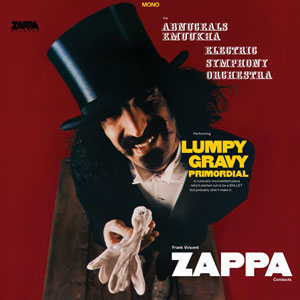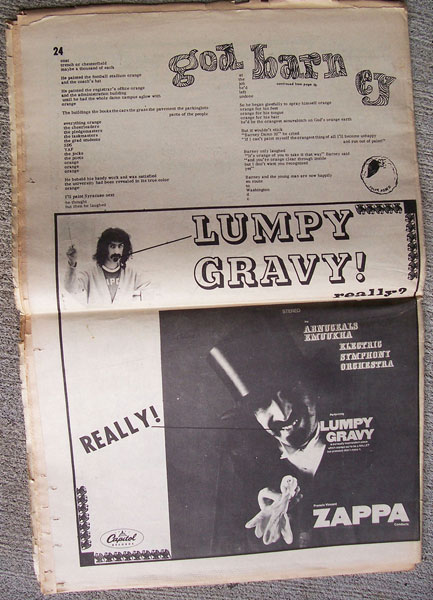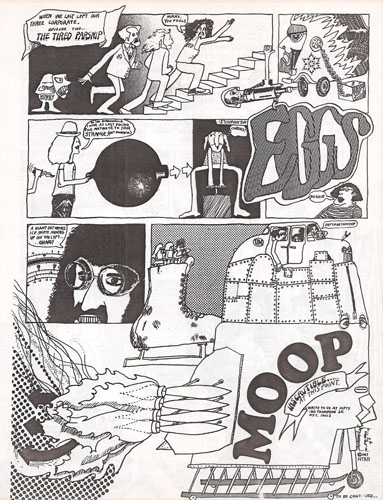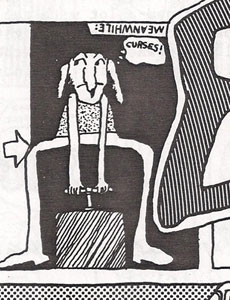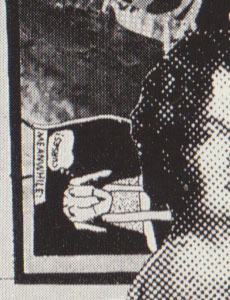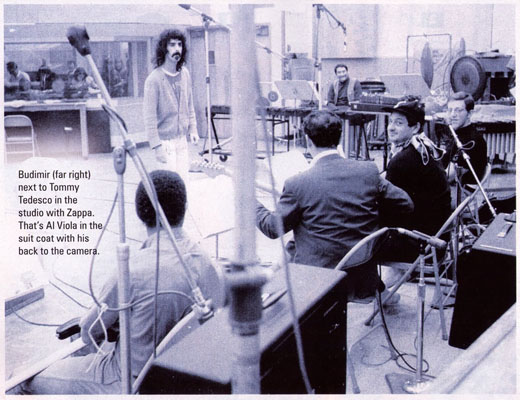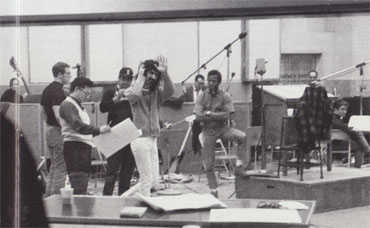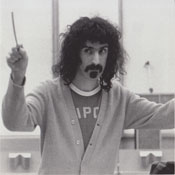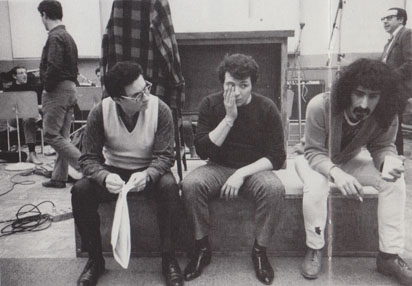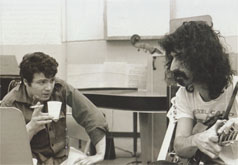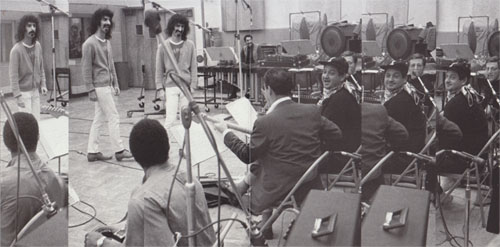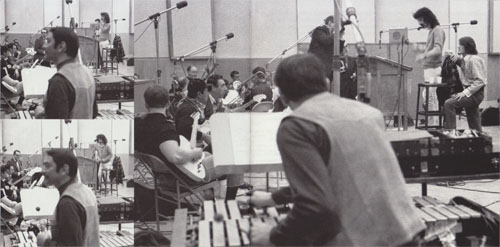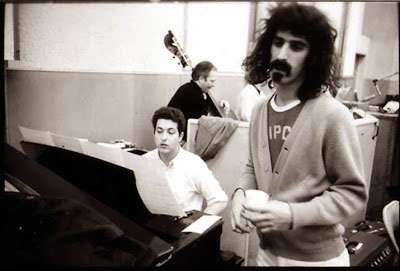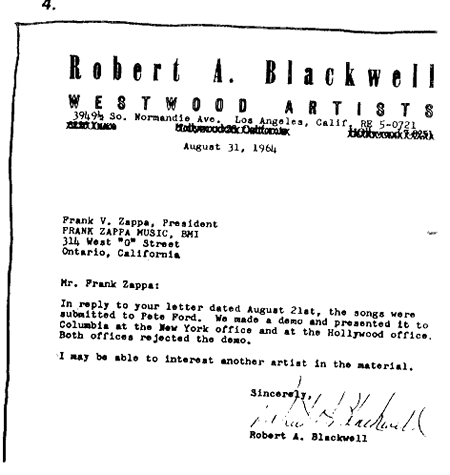02/13/67 (8:30-11:30PM) Capitol Studios, Hollywood, CA—Sunday (master # 57133 [...])
MUSICIANS: FZ, Esther Roth (OM), John Guerin (drums), James Helms (guitar), Robert West (bass guitar), James Bond (bass), Kenneth Watson (tympani, mallets), Paul Smith (piano), Thomas Poole (percussion)
03/14/67 (8PM-12midnight) Capitol Studios, Hollywood—no titles listed (master # 57290 [...])
MUSICIANS: FZ, Sid Sharp (contractor), Ted Nash (flute, bass flute, alto sax, contra b. clarinet), Jules Jacob (oboe, English horn, flute, piccolo, tenor sax), Johnny Rotella (flute, baritone sax, E flat contra. Clarinet, b. clarinet), John L. Gardner (flute, clarinet, bassoon, bass sax, soprano sax, tenor sax), Emil Radocchia (aka Emil Richards—mallets, percussion, tympani, Latin), Gene P. Estes (mallets, percussion, tympani, Latin), James C. Zito (trumpet, flugelhorn, piccolo trumpet), Thomas J. Tedesco (guitar, bells, bongos), Kenneth Shroyer (tenor trombone, bass trombone), Frank Capp (drums, Latin), Don Christlieb (bassoon, contra bassoon), Michael A. Lang (piano), John Balkin, Alfred Viola, Robert West, Dennis Budimir, Arthur E. Briegleb, George F. Price, Lyle Ritz, Joan Steele (copyist), Robert M. Calderwood (copyist), Russell N. Brown (copyist), Vincent Bartold (copyist), Jack DuLong (copyist)
03/15/67 (8PM-12midnight) Capitol Studios, Hollywood—Lumpy Gravy (master # 57320 [...])
MUSICIANS: FZ, Sidney Sharp (contractor), John L. Gardner (piccolo, flute, bassoon, baritone clarinet), Johnny Rotella (E flat clarinet, flute, piccolo, clarinet, E flat contra.), Gene P. Estes (tympani, Latin, percussion, mallets), Victor Feldman (tympani, Latin, percussion, mallets), Ted Nash (flute, bass flute, alto sax, clarinet), Gene Cipriano (oboe, flute, bass flute, E flat clarinet), Kenneth Shroyer (tenor and bass trombone, bass trumpet), James O. Zito (trumpet, flugelhorn, piccolo trumpet), Thomas Tedesco (guitars, bells, bongos), Don Christlieb (bassoon, contra bassoon), Robert West, John Balkin, Charles Berghofer, Lincoln Mayorga, George F. Price, David A. Duke, Alfred Viola, Trefoiyi Rizzi, Shelly Manne, Leonard Malarsky, William Kurasch, Arnold Belnick, Ralph Schaeffer, Jerome A. Kessler, Raymond J. Kelley, Leonard Selic, Joseph DiFiore, Harry Hyams, Philip Goldberg, Joseph Saxon, Jesse Erlich, Tibor Zelig, Harold Ayres, Jerome J. Reisler, Robert Ross (copyist), R.D. McMickle (copyist), John Donahue (copyist), Robert Calderwood (copyist), C.D. Goodwin (copyist), Russell N. Brown (copyist), Joan Steele (copyist)
03/16/67 (8-12midnight) Capitol Studios, Hollywood—Unit 3A (master # 57334) [...]
MUSICIANS: FZ, Sidney Sharp (contractor), Johnny Rotella (bass and alto sax, flute, E flat clarinet, bass clarinet, E flat contra.), John L. Gardner (flute, clarinet, bass clarinet, bassoon), Gene Cipriano (oboe, flute, bass flute, E flat clarinet), Ted Nash (flute, bass flute, bass clarinet, contra bass clarinet), Alan Estes (tympani, mallets, percussion, Latin), Victor Feldman (tympani, mallets, percussion), Thomas Tedesco (guitars, bells, bongos), Don Christlieb (bassoon, contra bassoon), James C. Zito (trumpet, flugelhorn), Lew McCreary, John Balkin, Lincoln Mayorga, Dennis Budimir, Robert West, Trefoni Rizzi, Vincent DeRosa, Arthur Maebe, Shelly Manne, Harry Hyams, Joseph DiFiore, Harold G. Bemko, Jerome A. Kessler, Joseph Saxon, Jesse Erlich, Alexander Koltun, Tibor Zelig, Ralph Schaeffer, Bernard Kundell, William Kurasch, James Getzoff, Philip Goldberg, Leonard Selic, Arnold Belnick, James E. Bond Jr., Robert H. Ross (copyist), John Donahue (copyist)
